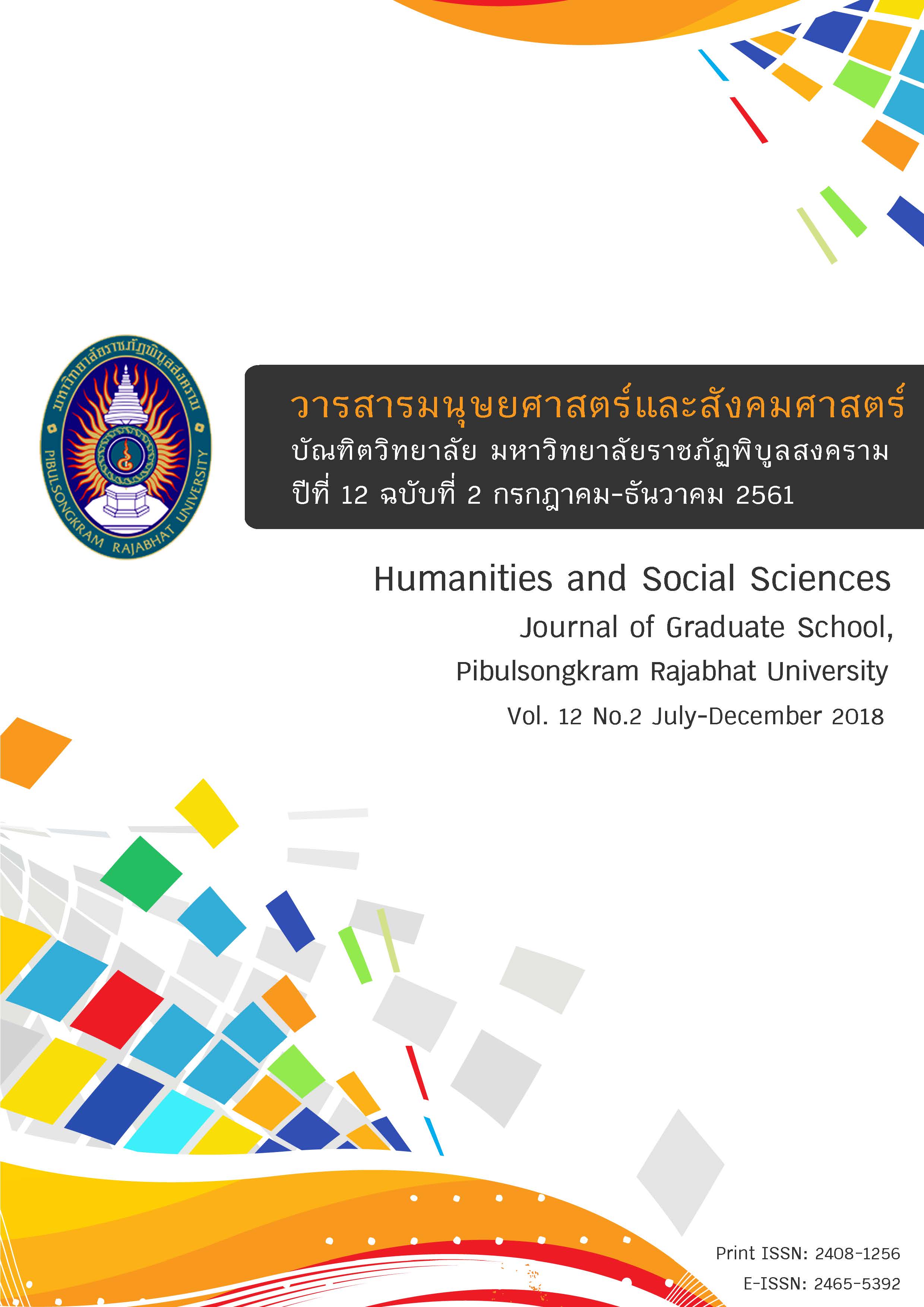A Study of Operational Guidelines for Risk Reduction of Schools under the Secondary Educational Service Area Office 39
Keywords:
Operational guidelines, School risk reduction, The secondary educational service area office 39Abstract
The purpose of this research was to study operational guidelines for risk reduction of schools under the secondary educational service area office 39.The informants were 9 experts at least master’s degree graduation and ten-year experience, consisting of experts in educational administration, internal control, and risk management. The research instrument was a structured interview. The data analysis was the content analysis. The results indicated that the operational guidelines for risk reduction of schools under the secondary educational service area office 39 on the overall found that the school risk management should operate as follows: 1) should realize the importance of the risk management, 2) should give the staff knowledge and understanding of the risk management, 3) should manipulate the school risk data, 4) should analyze the school risk causes, 5) should plan, operate, and follow up the school risk management, 6) should make school stakeholders participate in brainstorming. When considering each step, it was found that there were five operational guidelines for the school risk reduction as follows: 1) issue 1: analyzing the future risk affecting objectives, goals, and indicators of the risk management, 2) issue 2: collecting risk data on strategy, operation, finance, and regulation, 3) issue 3: anticipating the risk on strategy, operation, finance, and regulation, 4) issue 4:transferring the school risk strategy on operation, finance, and regulation, 5) issue 5: following up the risk management continuously and systematically.
References
กระทรวงศึกษาธิการ. (2558). แผนปฏิบัติการ ประจำปีงบประมาณ พ.ศ. 2558. กรุงเทพฯ: ม.ป.ท.
กลุ่มตรวจสอบภายในระดับกระทรวง. (2556). คู่มือการบริหารความเสี่ยง. กรุงเทพฯ: ม.ป.ท.
ธร สุนทรายุทธ. (2550). การบริหารจัดการความเสี่ยงทางการศึกษา. กรุงเทพฯ: เนติกุลการพิมพ์.
ธีระ รุญเจริญ. (2550). ความเป็นอาชีพในการจัดและบริหารการศึกษายุคปฏิรูปการศึกษา. กรุงเทพฯ:
แอล.ที.เพรส.
นันทนิตย์ ท่าโพธิ์. (2556). การศึกษาสภาพการบริหารความเสี่ยงของผู้บริหารสถานศึกษา สังกัดสำนักเขตพื้นที่การศึกษามัธยมศึกษา เขต 39. (วิทยานิพนธ์ครุศาสตรมหาบัณฑิต). มหาวิทยาลัยราชภัฏพิบูลสงคราม, พิษณุโลก.
ปสุตา โอษฐ์จันทร์ศรี. (2556). รูปแบบการบริหารความเสี่ยงด้านนโยบายและด้านกลยุทธ์ของโรงเรียนเอกชนระดับการศึกษาขั้นพื้นฐานสังกัดกระทรวงศึกษาธิการ. (ปรัชญาดุษฎีบัณฑิต). มหาวิทยาลัยบูรพา, ชลบุรี.
พิณสุดา สิริธรังศรี. (2557). รายงานการวิจัยและพัฒนา เรื่อง รูปแบบการบริหารการศึกษาขั้นพื้นฐาน.กรุงเทพฯ: สำนักงานเลขาธิการทางการศึกษา.
วัลลภ มานักฆ้อง และนงลักษณ์ ใจฉลาด. (2559). การศึกษาสภาพการบริหารความเสี่ยงของสถานศึกษาสังกัดสำนักงานเขตพื้นที่การศึกษามัธยมศึกษา เขต 39. ใน การประชุมวิชาการเสนอผลงานวิจัยระดับบัณฑิตศึกษาแห่งชาติ ครั้งที่ 36 (The 36th National Graduate Research Conference) (น.217-228). เชียงใหม่: มหาวิทยาลัยแม่โจ้.
ศูนย์เฉพาะกิจคุ้มครองและช่วยเหลือเด็กนักเรียน. (2557). คู่มือการคุ้มครองและช่วยเหลือเด็กนักเรียน. กรุงเทพฯ: โรงพิมพ์ชุมนุมสหกรณ์การเกษตรแห่งประเทศไทย.
สมหมาย อ่ำดอนกลอย. (2556). บทบาทผู้บริหารสถานศึกษาในศตวรรษที่ 21. วารสารบัณฑิตศึกษา มหาวิทยาลัยราชภัฏพิบูลสงคราม, 7(1), 1-7.
สำนักงานคณะกรรมการข้าราชการครูและบุคลากรทางการศึกษา. (2553). แผนบริหารความเสี่ยงของสำนักงาน ก.ค.ศ. ประจำปี งบประมาณ 2553. กรุงเทพฯ: สำนักงานคณะกรรมการข้าราชการครูและบุคลากรทางการศึกษา.
สุมนา เสือเอก. (2553). การริหารความเสี่ยงของเรียนอาชีวศึกษาเอกชนในกรุงเทพมหานคร. (วิทยานิพนธ์
ครุศาสตรมหาบัณฑิต). มหาวิทยาลัยราชภัฏธนบุรี, กรุงเทพ.
Donald, S. M. & Muehlbach. (2008). Risk management content analysis: Understanding the relationship with contenting education planning. Minnesota: Capella University.
Wilson, Jo. & Tingle, John. (1999). Clinical risk modification : a route to clinical governance? /. Oxford: Butterworth-Heinemann.
Downloads
Published
How to Cite
Issue
Section
License
Any articles or comments appearing in the Journal of Humanities and Social Sciences, Rajabhat Phibulsongkram University, are the intellectual property of the authors, and do not necessarily reflect the views of the editorial board. Published articles are copyrighted by the Journal of Humanities and Social Sciences, Rajabhat Phibulsongkram University.









